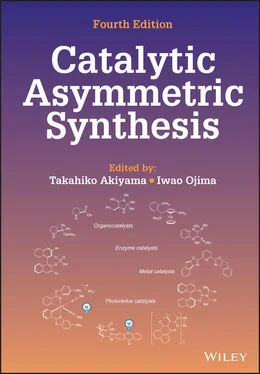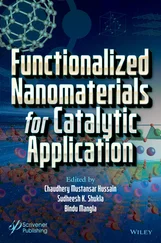Source: Based on [167].
Expansion to other transition metals and reaction manifolds was successful. One such important contribution came from the List group in 2010, by utilizing an achiral Mn‐salen complex in conjunction with a chiral‐anion ( Scheme 4.50) [167]. The chiral‐anion was proposed to stabilize one enantiomorph of the achiral Mn‐salen complex, leading to high selectivity for the epoxidation of alkenes. This was later extended to the enantioselective sulfoxidation of sulfides with an Fe‐salen complex [168]. In 2018, the Matsunaga group demonstrated an Rh‐catalyzed enantioselective C–H functionalization using a binaphthyl‐derived bis‐sulfate chiral‐anion [169].
4.3.7. Anion‐Binding Catalysis
Rather than utilizing an anionic chiral catalyst to ion‐pair cationic reagents, an alternate strategy was developed that focuses on a neutral chiral catalyst that can bind achiral‐anions, forming an in situ chiral‐anion.
4.3.7.1. Nonaromatic Cations
In 2004, the Jacobsen group demonstrated that an anion‐binding catalyst could be used to affect an enantioselective acyl‐Pictet‐Spengler reaction ( Scheme 4.51) [170]. A variant that features activation of a hydroxylactam by trimethylsilyl chloride (TMSCl) was later demonstrated as well [171]. Mechanistically this reaction proceeds by formation of an acyl iminium cation, where the chloride counteranion is hydrogen bound to the chiral urea catalyst. This keeps the chiral information close to the cationic center, allowing selective nucleophilic attack by the indole.
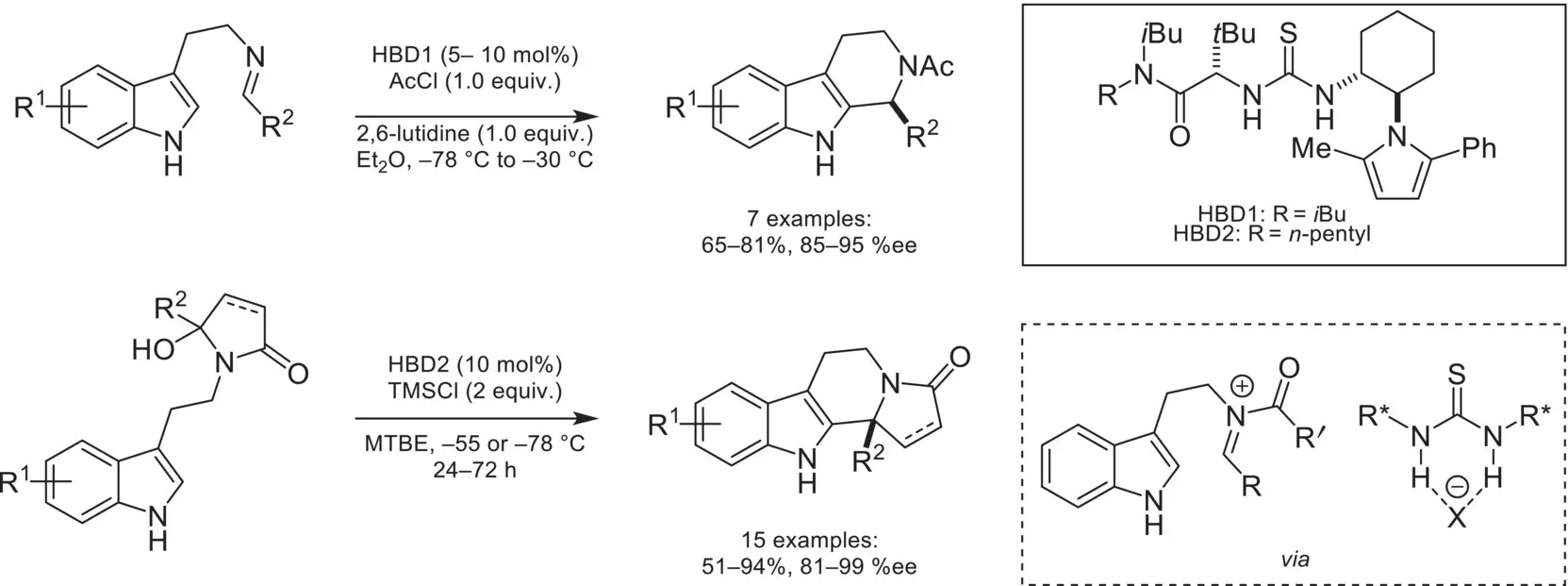
Scheme 4.51. Enantioselective acyl‐Pictet‐Spengler reaction enabled by anion‐binding catalysis.
Source: Based on [170].

Scheme 4.52. Enantioselective reactions enabled by anion‐binding catalysis proceeding through oxocarbenium and carbocation intermediates.
Source: Based on [172].
In addition to iminium reactivity, this anion‐binding strategy was applicable to the generation and enantioselective transformations of oxocarbeniums. In the first report by the Jacobsen group, chloroisochromans were activated by anion‐binding of the chloride, generating an oxocarbenium ion‐paired to a chloride‐bound chiral catalyst ( Scheme 4.52) [172]. The oxocarbenium is then trapped enantioselectively by silyl ketene acetals in good yield and enantioselectivities. In 2016, the Seidel group demonstrated the first highly enantioselective, catalytic oxa‐Pictet‐Spengler via anion‐binding catalysis [173]. A strong counteranion effect on the enantioselectivity of the reaction reveals the importance of cooperativity between the anion and hydrogen‐bond donor. The ionization of alkyl halides could also be accomplished without the aid of an adjacent heteroatom donor. By utilizing neryl chloride analogues, the Jacobsen lab demonstrated an enantioselective tail‐to‐head cyclization proceeding in high yields and enantioselectivities [174].
4.3.7.2. Cationic Heterocycles
In 2009, Seidel demonstrated the first use of anion‐binding asymmetric catalysis for the kinetic resolution of amines ( Scheme 4.53) [175]. In this system, 4‐dimethylaminopyridine (DMAP) is first benzoylated by benzoic anhydride, forming an activated electrophilic cation, and achiral benzoate anion. The benzoate becomes associated to the catalyst by hydrogen bonding, forming a chiral‐anion complex. This newly formed chiral ion‐pair can then lead to the kinetic resolution, with s‐factors between 7.1 and 24 for a variety of benzylic amine substrates. By utilizing variants of a chiral thiourea catalyst, this strategy was found to be applicable to a variety of other amines, such as propargylic amines [176], allylic amines [177], as well as the desymmetrization of meso ‐diamines [178], and kinetic resolution of 1,2‐diamines [179]. The choice of achiral DMAP derivative in this chemistry was found to have a profound effect on observed selectivities, highlighting the importance of tuning the achiral cation to achieve good selectivities [180].
In 2011, the Jacobsen group demonstrated the enantioselective benzoylation of cyclic silyl ketene acetal via anion‐binding catalysis ( Scheme 4.54) [181]. In this example, benzoyl fluoride is used with co‐catalytic DMAP derivative to generate free fluoride anion, which is hydrogen bound to the thiourea. The fluoride desilylates the substrate, leading to binding of the anionic enolate and subsequent asymmetric benzoylation. This was expanded upon shortly thereafter by the Seidel group, with an enantioselective Steglich rearrangement utilizing a thiourea catalyst [182]. By replacement of the DMAP with quinolines, it was found that nucleophilic attack occurred onto the 2‐position of the quinoline, rather than at the carbonyl.
In 2014, the Mancheño group demonstrated chiral helical oligotriazoles as a new class of anion‐binding catalysts ( Scheme 4.55) [183]. In this reaction, a quinoline undergoes an enantioselective dearomative alkylation‐carbonylation. In this transformation, the chloride anion released from nucleophilic attack onto the TrocCl is bound to the anion‐binding catalyst. This reaction was found to also work well with isoquinolines with slight modification to the catalyst structure [184]. In addition, silyl ketene thioacetals were also well tolerated as nucleophiles [185]. In addition to fused aromatics, the reaction was found to work well with pyridine substrates [186]. Selectivity between alkylation of C‐2 and C‐4 was mainly controlled by the identity of the substrate, where high yields and enantioselectivities were observed at both sites. This work was expanded to diazines, where similar selectivities were controlled by the substrates [187]. In 2016, the Mukherjee group demonstrated that silyl phosphites were good nucleophiles for this reaction in combination with thioether catalyst [188]. In 2017, the Mancheño group demonstrated similar reactivity with silyl phosphites on quinolines [189]. In addition to (thio)urea and triazole‐containing catalysts, the Mattson group developed novel BINOL‐derived silanediol, anion‐binding catalysts [190]. In 2015, an improved silanediol catalyst was developed that catalyzed the alkylation of isoquinolines in moderate yield and enantioselectivity ( Scheme 4.56) [191]. In a follow‐up publication, the Mattson group applied this new catalyst system to chromenone functionalization, via pyrilium intermediates [192].
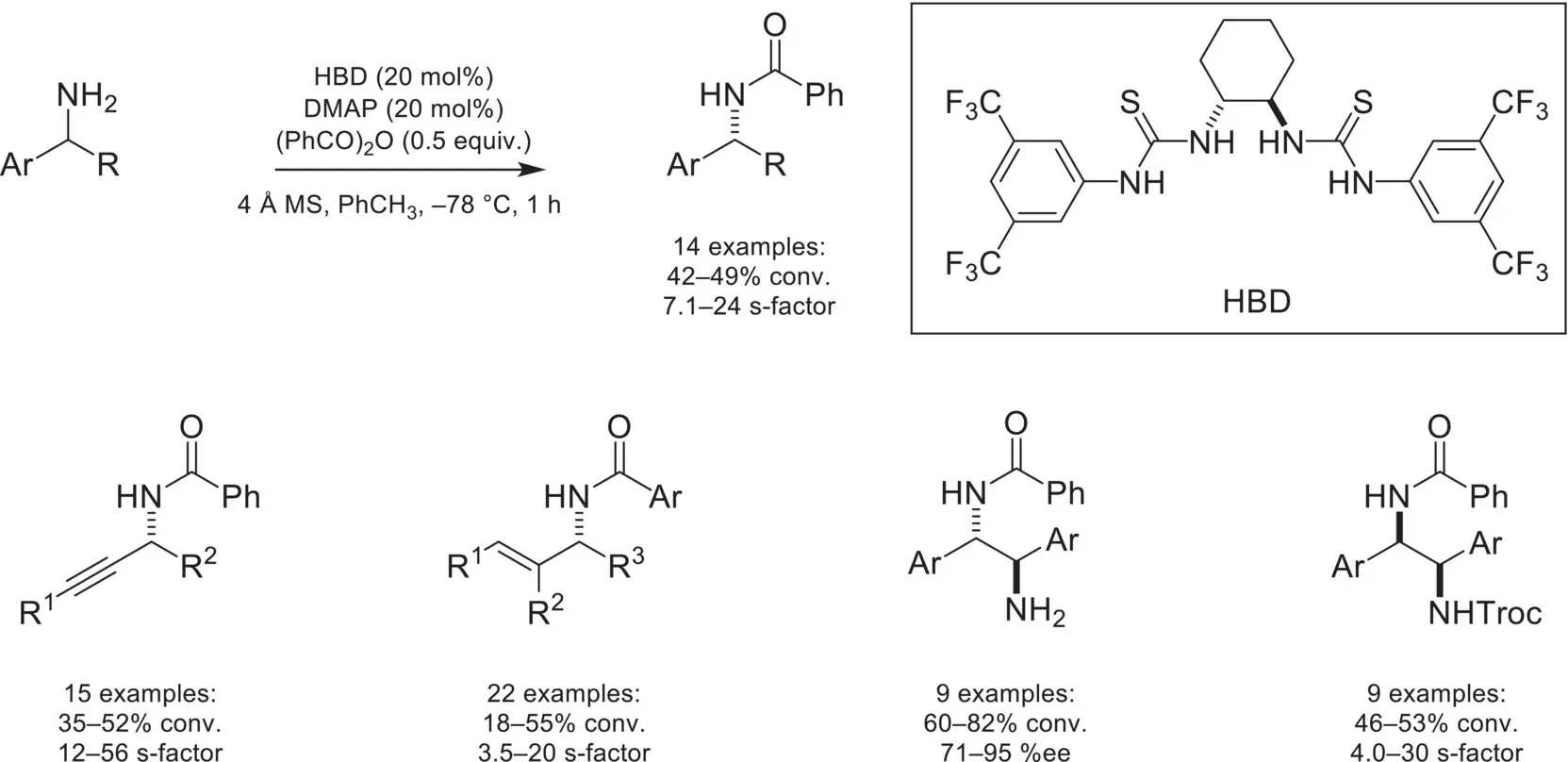
Scheme 4.53. Kinetic resolution of amines via anion‐binding catalysis.
Source: Based on [175].
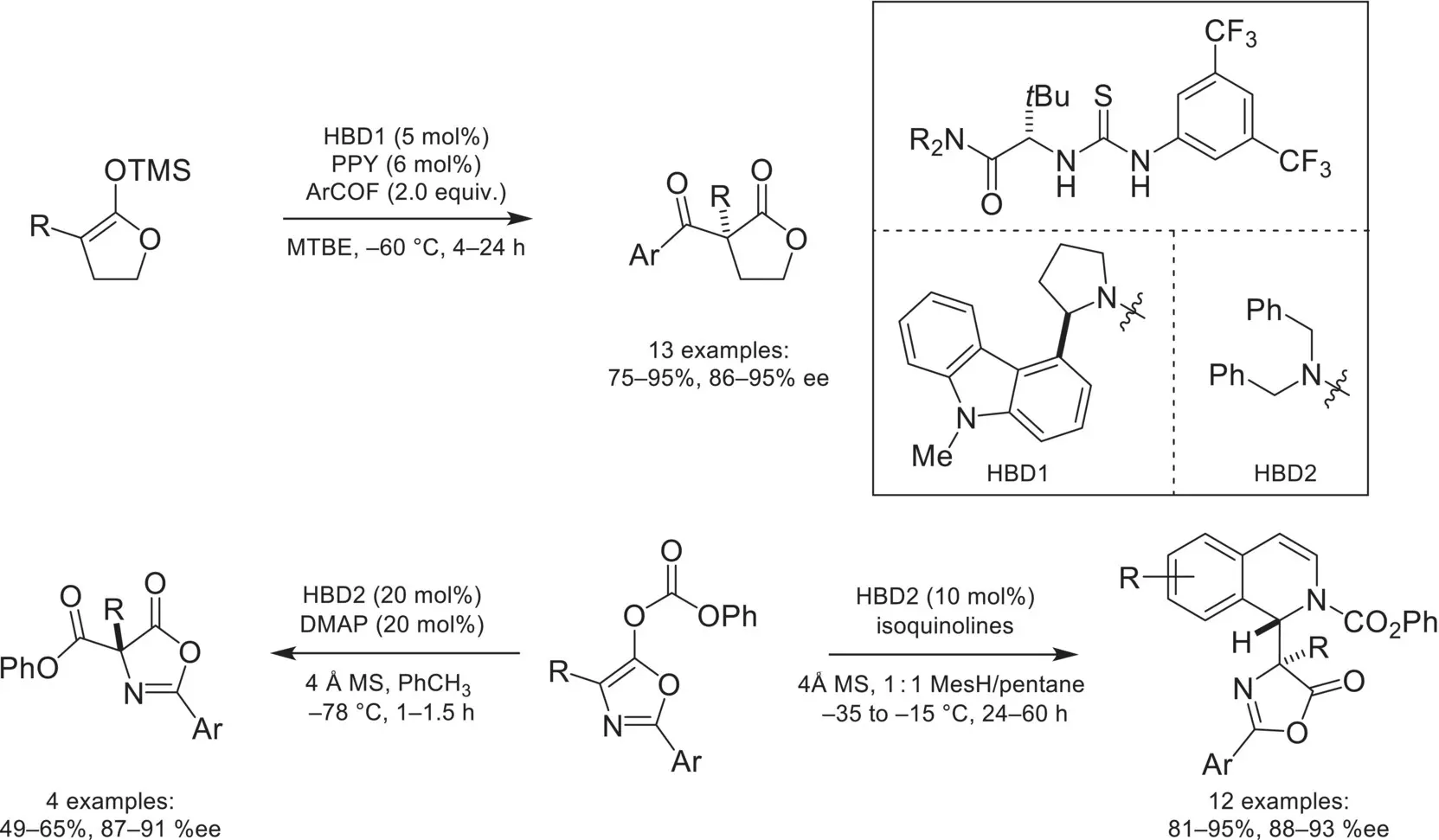
Scheme 4.54. Enantioselective reactions of enol ethers enabled by anion‐binding catalysis.
Source: Based on [181].
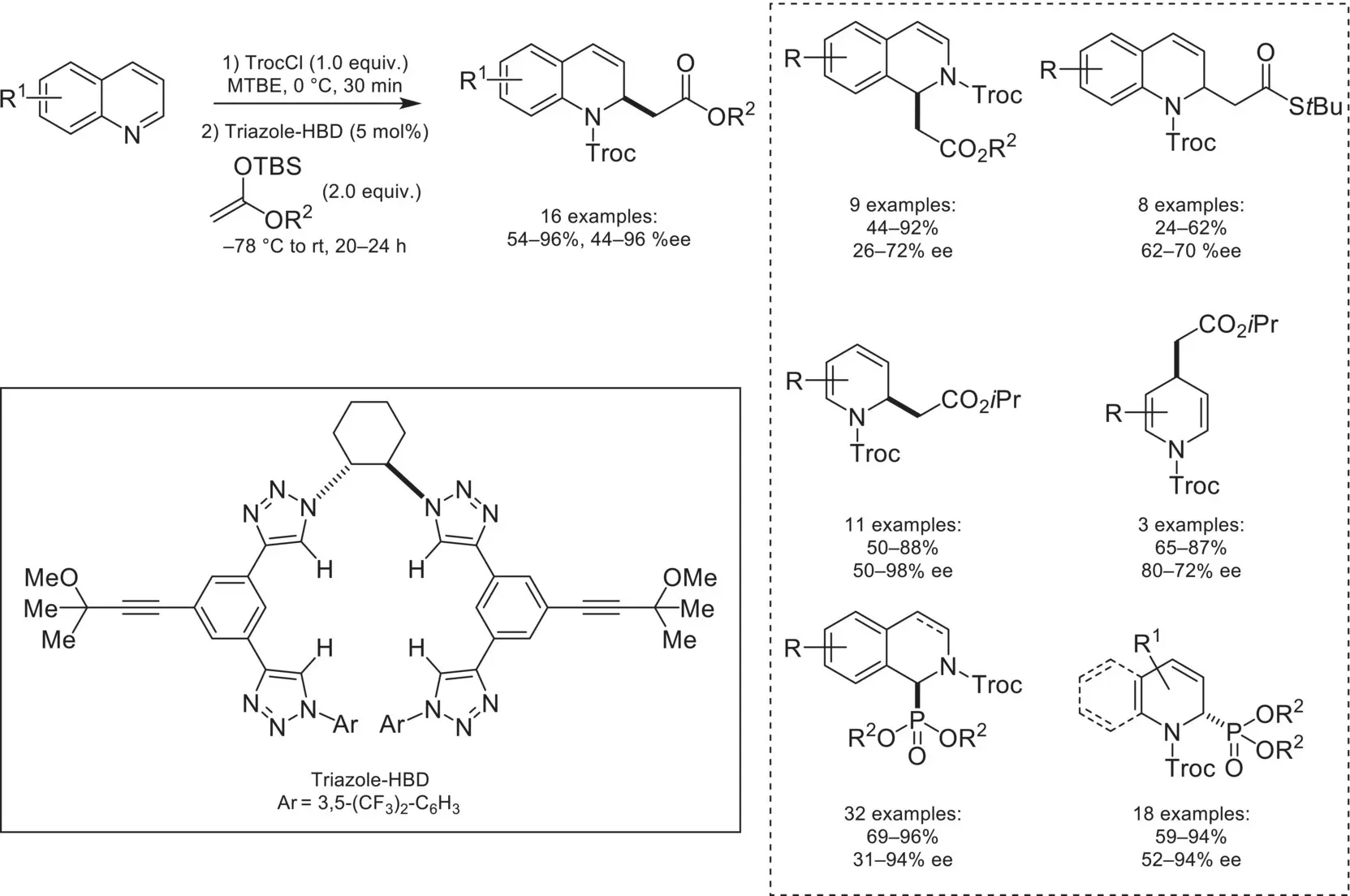
Scheme 4.55. Enantioselective dearomatization of heterocycles enabled by anion‐binding catalysis.
Читать дальше
